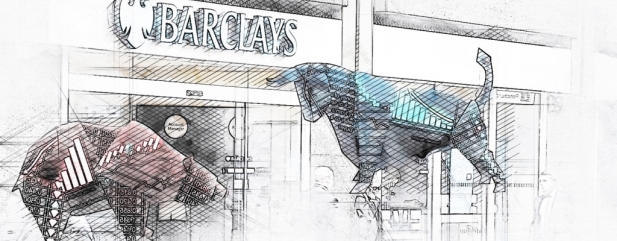Archived article
Please note that tax, investment, pension and ISA rules can change and the information and any views contained in this article may now be inaccurate.
Why have investors fallen out of love with UK banks?

Despite mostly positive first-half results, UK banks are completely out of favour with investors so there’s a lot hanging on reports this week from three of Britain’s biggest lenders.
Leading the way is Barclays (BARC) which on 24 October reported continued steady growth in its third-quarter period.
Pre-tax profit excluding litigation and PPI charges grew by 23% compared with 20% in the first half, thanks to lower provisions for bad loans. The bank also managed to trim operating costs by 3%, keeping its cost-income ratio steady.
Barclays has the highest net interest margin of the three (the return it gets on loans minus the cost of customer deposits), but loan and deposit growth is anaemic for Barclays and others.
Lloyds’ (LLOY) third quarter figures were due to be released as this issue of Shares was published (25 Oct). The bank also had a strong first half with profit-after-tax up nearly 40% thanks to higher revenues and lower PPI charges.
Its net interest margin isn’t far behind Barclays and it has by far the lowest cost-to-income ratio. It also wins the prize for the easiest-to-decipher results statement.
There has been speculation that Lloyds could double its share buyback to £2bn next year as well as raising its dividend.
Finally Royal Bank of Scotland (RBS) reports on Friday 26 October. It’s the weakest of the three in terms of cost-to-income and net interest margin and first-half results were unremarkable with total income falling 3%.
However all eyes will be on the dividend policy. The bank paid 2p per share on 12 October, its first dividend in a decade after returning to profit last year, and shareholders will be keen to know whether they can expect further payouts.
RBS is still majority-owned by the UK Treasury (62%) after it had to be bailed out during the crisis.
A recent study by the Bank of England suggests banks are cutting back on lending particularly to consumers, rather than trying to grow their loan books.
The latest Credit Conditions survey shows that, excluding remortgages and credit cards, the banks offered less credit to households last quarter and expect to offer less again this quarter even though default rates are falling.
The reasons seem to be two-fold. First, the interest margin or ‘spread’ on lending to households is expected to narrow significantly this quarter so the banks will earn less.
Second, the Bank of England is unhappy with the amount of new loans this year to companies which already have a lot of debt.
This increase in ‘leveraged’ lending and lower underwriting standards mean the banks may be taking on more risks than is healthy, so as a result they are expected to decrease the amount of lending to consumers. (IC)
Important information:
These articles are provided by Shares magazine which is published by AJ Bell Media, a part of AJ Bell. Shares is not written by AJ Bell.
Shares is provided for your general information and use and is not a personal recommendation to invest. It is not intended to be relied upon by you in making or not making any investment decisions. The investments referred to in these articles will not be suitable for all investors. If in doubt please seek appropriate independent financial advice.
Investors acting on the information in these articles do so at their own risk and AJ Bell Media and its staff do not accept liability for losses suffered by investors as a result of their investment decisions.
 magazine
magazine









